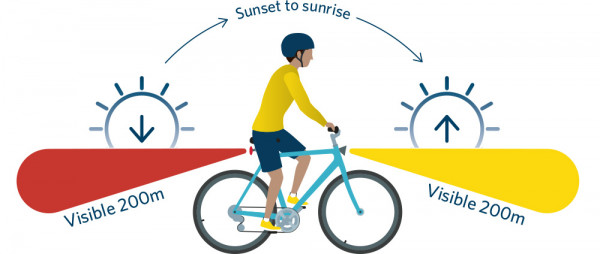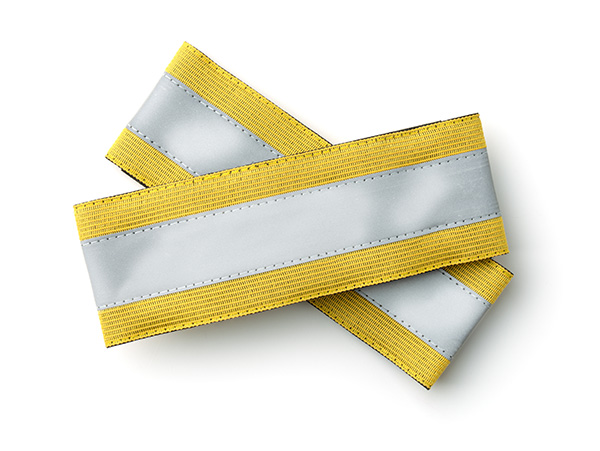You must wear a helmet when riding a bike, and your bike must have good brakes. You must also have the correct lights and reflectors for the conditions you are riding in.
This page describes equipment for safe cycling:
Have good brakes
Wear a helmet
Lights and reflectors
All bikes must have good brakes on the front and back wheels, so you can stop quickly while staying in control.
Follow other vehicles at a safe distance. You must leave enough clear space to stop if the vehicle in front stops suddenly.
You must wear a helmet when riding a bike. If you carry any passengers on your bike, they must wear a helmet too. This rule applies to all types of riding on-road and off-road.
Your helmet must fit properly and be designed for use as a bike helmet. Motorbike helmets, climbing helmets or horse riding helmets are not suitable when riding a bike.
A bike helmet will only protect your head once. If it is dropped or involved in a crash, inspect it for small cracks, inside and out. Damaged helmets should be replaced.
Your bike must have the correct lights and reflectors for the conditions you are riding in. Lights and reflectors both help you be seen.
You must use lights between sunset and sunrise, and at any other time when you can’t clearly see a person or vehicle 100 metres away – about the length of a rugby or football field.
You must have one or two front lights on your bike. Only one front light may flash. Front lights must be white or yellow.
You must have at least one rear light. Any rear light may flash. Rear lights must be red.
Lights must be seen from 200 metres away at night.
Your lights must not dazzle, confuse or distract other people.

Sunrise, sunset and low lightRoads may lose the light earlier or later than official sunrise and sunset times, such as when a road is in a steep valley. If the light is fading where you are riding, turning your lights on earlier can help you be seen. Rain, and deep shadow from trees or buildings, can also reduce visibility. |
All bikes must have a red or yellow reflector facing backwards, even if you only ride in daylight.
You must also have pedal reflectors when riding between sunset and sunrise, and at any other time when you need lights. Pedal reflectors must be on the front and back of each pedal. The movement of pedals with pedal reflectors is eye-catching.
Some pedals don’t allow you to easily attach reflectors. If you ride at night without pedal reflectors, you must wear reflective material (such as reflective trim on clothing or a reflective band). Reflective bands on your arms can also help drivers see your hand signals clearly.



Be seen but don’t dazzleLights and reflectors only work if they can be seen clearly – don’t obscure them with bags or jackets. Take care with very bright lights used for lighting your way – angle them slightly down and avoid pointing them directly at other people. Flashing lights help catch people’s attention. For front lights, one flashing light and one steady light is a good combination. |